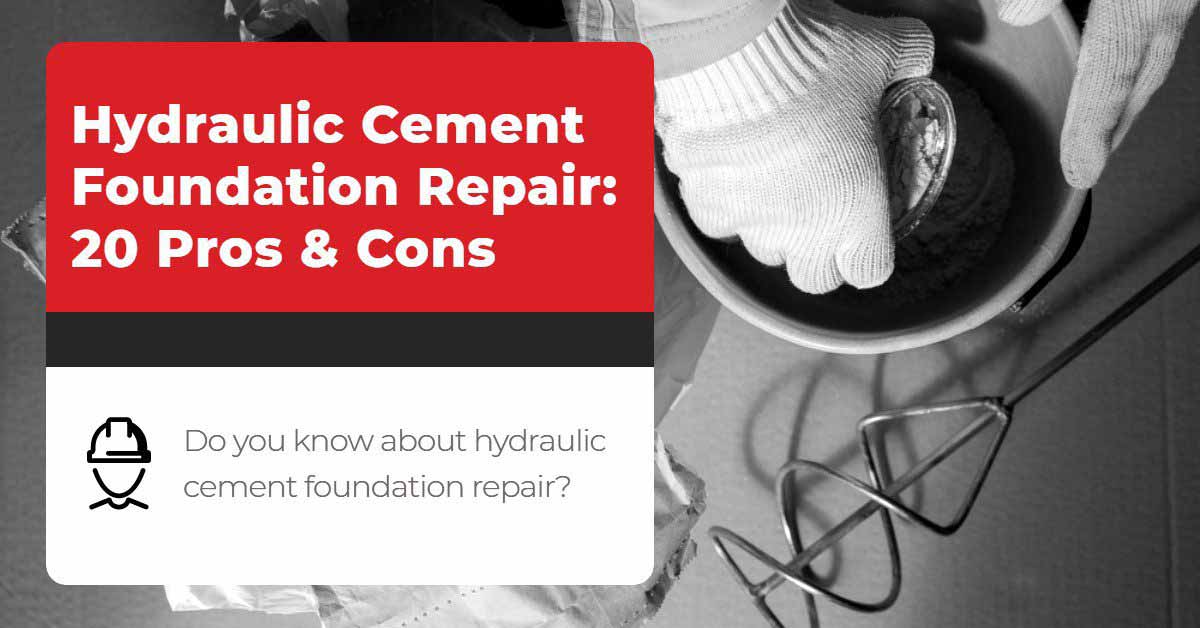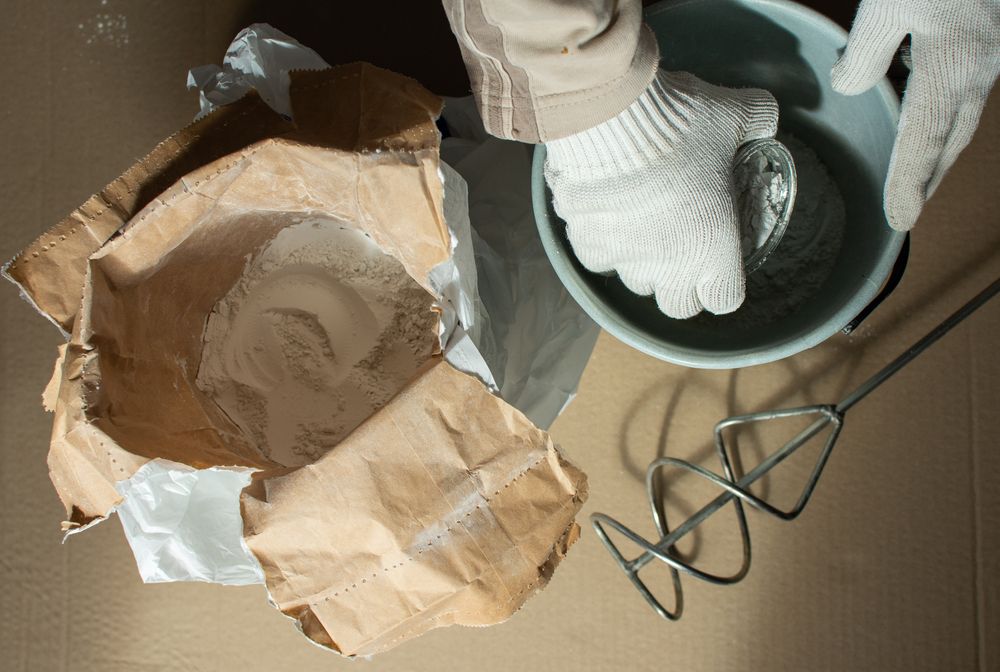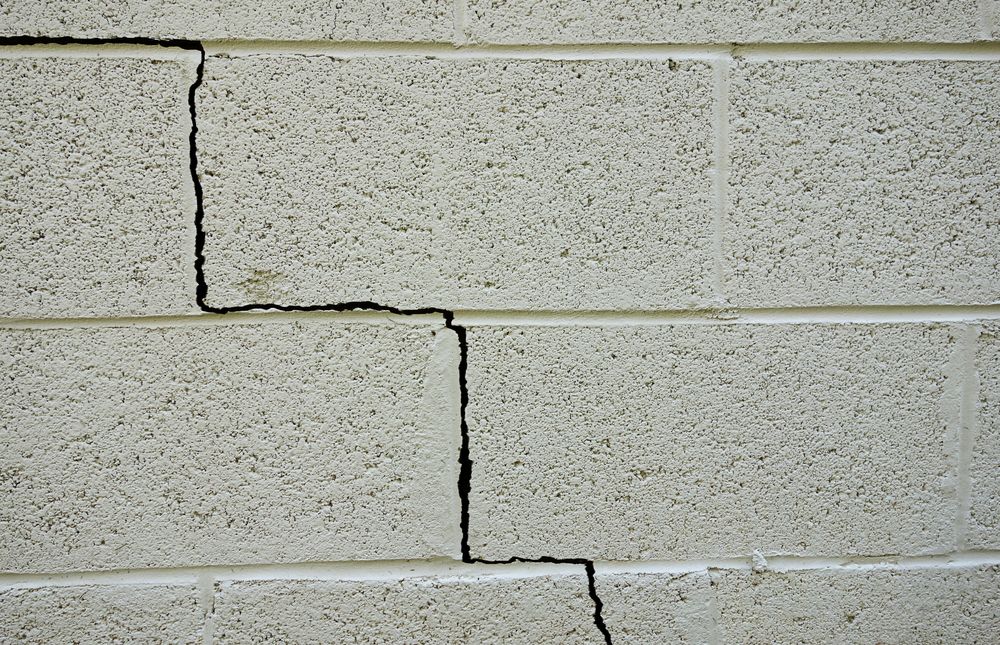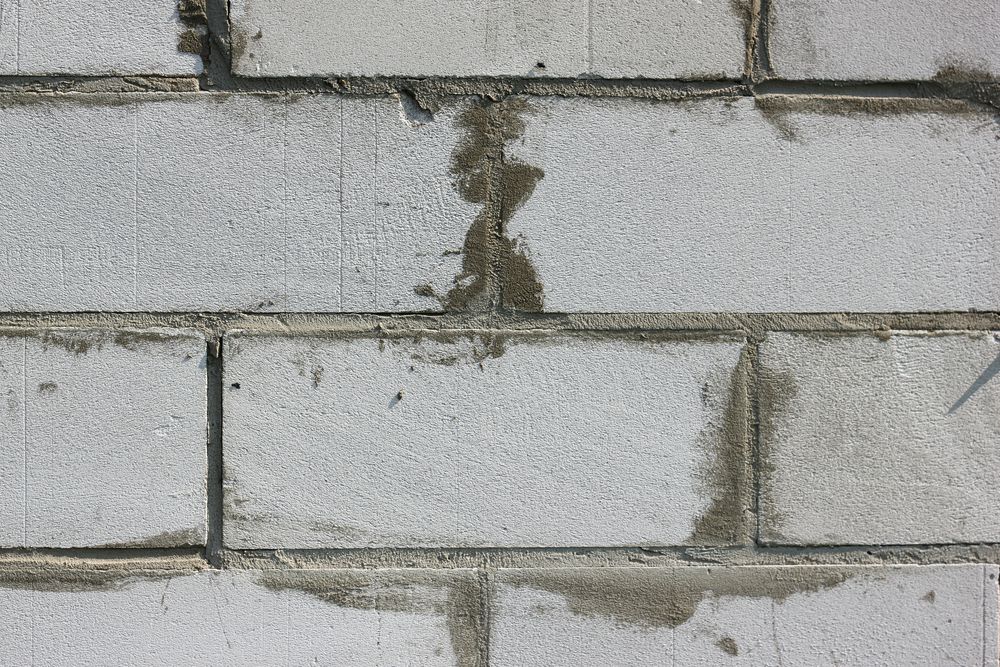Do you know about hydraulic cement foundation repair? If not, this article will give you 20 pros and cons you should know about. Hydraulic cement can be used on chimneys, drainage systems, swimming pools, utility holes, and most importantly, foundations and basement walls.
Most articles out there will tell you to stay away from Hydraulic cement. This article’s goal is to give both the pros and cons.
What is Hydraulic Cement?
Any dry powdered cement is “hydraulic,” meaning it will set and harden after being combined with water. The Romans first invented the mix, but the formula was lost in 476 AD. It wasn’t until 1776 that a man named John Smeaton reinvented it. To this day, it’s used in all sorts of construction or repair projects. Hydraulic cement is usually a blend of Portland cement with additives like limestone, gypsum, and clay. The extra ingredients decrease the setting time, allowing it to set and cure in wet conditions. The cement mix does not shrink like ordinary cement and can even expand slightly.
There are different types of hydraulic cement out there. A few are,
- General-use Hydraulic Cement – Used for fixing floors, pavements, buildings, etc., as a leakage stopper.
- White Hydraulic Cement – Made with minimal iron and magnesium, this mix comes out white and is mainly used with white concrete.
- Moderate Sulfate Resistant Hydraulic Cement – This type of cement is used in structures exposed to seawater. Sulfate is like acid.
- High Sulfate Resistant Hydraulic Cement – This cement is used in concrete structures that regularly face a high amount of sulfates.
- Moderate Heat of Hydration Hydraulic Cement – Such cement is commonly used in structures with huge mass, such as piers, foundations of buildings, and large retaining walls. This cement will reduce temperature-related cracking, making the structure more durable.
- Low Heat of Hydration Hydraulic Cement – This cement is meant to give out very little heat after being mixed with water. It’s mainly used in large structures like dams.
- High Early Strength Hydraulic Cement – This type of hydraulic cement is for structures that need to be used immediately.
Hydraulic Cement Foundation Repair Pros
Hydraulic cement is mostly a DIY solution. Some of the pros include,
- It sets and hardens fast, only taking minimal time to dry after being mixed with water.
- It’s cost-effective, ranging from $10 to $300.
- It’s straightforward to use, coming with simple DIY instructions.
- Hot water will accelerate the setting time, and cold water will slow it down.
- You can use it on vertical applications like pillars and walls.
- It can maintain its strength if it’s submerged underwater.
- It won’t corrode or rust.
- If using nonshrink type cementitious material, It will not shrink.
- It can seal leaking cracks in pipes.
- Lastly, you can paint it within one hour of being applied.
Hydraulic Cement Foundation Repair Cons
Hydraulic cement’s main problem is that it only “covers” cracks, and it’s only a temporary solution.
- Once the cement is mixed, you only have a workable time of 10 to 30 minutes to apply.
- It will not work on frozen surfaces or if the temperature will drop dramatically within 48 hours.
- It will not work as well as it would in warmer temperatures if the temperature is below 40 degrees Fahrenheit (4.4 Celsius).
- The rigid cement plugs the hole, but its bond with most surfaces is feeble. As the concrete wall changes temperature, the plug will work its way loose.
- When water seeps through the masonry it may leave something called efflorescence, also called white powder, basically salt. When you use hydraulic cement, you’ll notice the salt building around the seal, proving it does nothing to stop the water.
- The seal will loosen over time when the concrete moves, shrinks and expands.
- The cement only lasts about two years before it fails and allows water back into the foundation.
- It’s prone to cracking.
- It’s weak because of the bonding capacity and adhesion to most cured surfaces.
- It is only a surface patch. The real problem will still exist if you “cover it up.”
Hydraulic Cement Health Concerns
When you use the cement, you’ll need to keep in mind these significant safety precautions. The basement or wherever you applied the cement will need to be closed off for a certain amount of time.
- Avoid breathing any of the dust.
- Please do not allow it to touch your skin or eyes.
- Wear PPE such as gloves, mask, goggles, and a gown.
- Hydraulic cement contains something called Silica. Inhaling Silica may cause lung problems, although there is no real evidence silica is a carcinogen. Regularly breathing in the silica dust may develop a non-curable and sometimes fatal lung disease called silicosis.
- Crystalline silica is found in materials such as concrete, masonry, and rock. When these materials are made into fine dust and suspended in the air, breathing in these fine particles can produce lung damage.
Read more about – House leveling complete guide.
Who Do You Call For Professional Help?
Using Hydraulic cement isn’t a reliable or lifetime fix. It’s quick and easy, yes. But so goes the old expression, “Buy nice, or buy twice.” If you use Hydraulic cement, you will likely have to repair the problem again and again. It’s better to call professionals who offer reliable solutions to foundation repair. Call Foundation Professionals of Florida for all of your foundation repair needs. Call us today, get a free quote, and schedule an inspection now!





